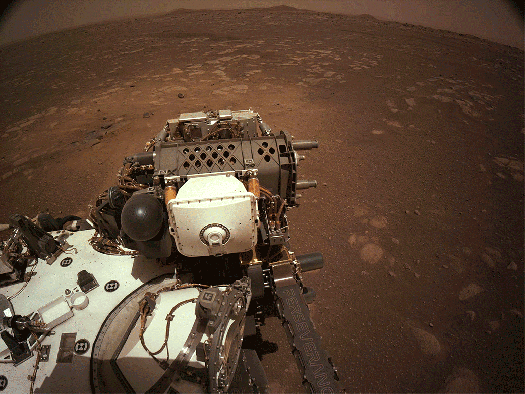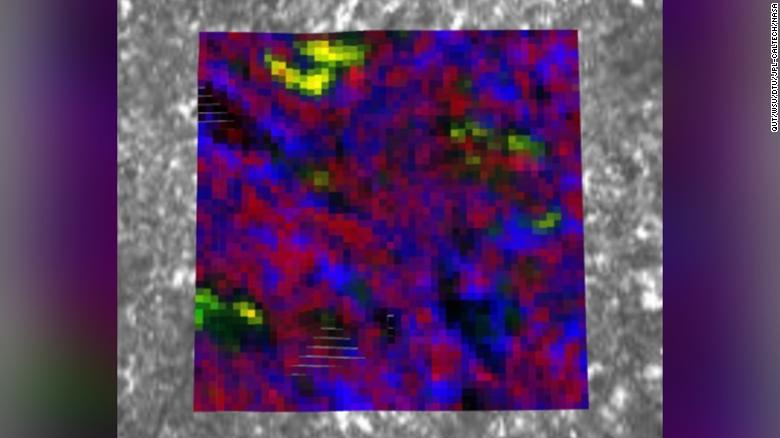
For the first time ever, a sample of pulverized rock from another planet has been drilled, collected and stored for eventual delivery to the highest-tech labs on Earth.
Yes, a storehouse of rocks were collected on the moon by Apollo astronauts and delivered to Houston, and some small samples of two asteroids and one comet were snatched by three spacecraft (two Japanese and one American) and their contents were brought here for study.
But never before has the surface of another planet been the source of precious extraterrestrial material that some day, if all goes well, will be received on Earth for intensive analysis.
The feat was accomplished by the team that operates the Perseverance rover on Mars. After an unsuccessful effort to drill what turned out to be a very soft rock in August , the rover drill succeeded in digging into a briefcase-sized hard volcanic rock twice this month and pulling out samples to be tubed and stored for later pick-up by a different mission.
That next step isn’t scheduled for another half decade and the samples would not arrived on Earth until well after that. But a long-dreamed and highly-ambitious effort to bring some of Mars to Earth (called Mars Sample Return) has now formally begun.
“This is a truly historic achievement, the very first rock cores collected on another terrestrial planet — it’s amazing,” Meenakshi Wadhwa, Mars sample return principal scientist at NASA’s Jet Propulsion Laboratory, said during a news conference held Friday
“In our science community, we’ve talked about Mars sample return for decades,” Wadhwa said. “And now it’s actually starting to feel real.”

The press conference was a victory lap of sorts for leaders of a team with many members who have worked eight to ten years for this moment. Lori Glaze, NASA’s director of the Planetary Science Division, also called it an historic achievement –the culmination of advances pioneered by many other NASA missions to Mars and elsewhere and a milestone for NASA’s Mars program.
“We were rewarded for our patience,” said Matt Robinson, Perseverance strategic sampling operations team chief. Showing an image of a titanium tube filled with the collected rock sample, he described what it was like for the team to see that first successful sample.
“Looking down the drill bit into the tube, you see a beautiful core there,” he said. “At that point, our team was just absolutely ecstatic. I don’t have words to say how we felt.”
Adding to the excitement was the finding that the rock that had been drilled — nicknamed Rochette — had unmistakable signs of having sat in a watery environment for a long time.
The scientists already knew that Jezero Crater, where the rover has been since landing last February, had once included a lake. But there was always a possibility that it had been a short-lived lake with floodwaters filling up the crater for dozens, rather than millions, of years.


Now scientists have evidence that groundwater was in Jezero for quite a long time. Katie Stack Morgan, deputy project scientist for the Perseverance mission, said in the press conference that Rochette showed many signs of long-term water interaction — highlighted by the presence of salts left behind. She said those salts could have been formed by groundwater altering the original rock or through the evaporation of water in the rock.
“If these rocks experienced water for long periods of time, there may be habitable niches within these rocks that could have supported ancient microbial life,” Stack Morgan said.

Ken Farley, a geochemist from the California Institute of Technology and project scientist for the mission, elaborated in a statement.
“It looks like our first rocks reveal a potentially habitable sustained environment. It’s a big deal that the water was there for a long time.”
Rochette looks to be a piece of a hardened lava, which is a type of rock that can be precisely dated. Scientists will as a result be able to determine how old this boulder is, and that helps them determine the ages of lower and older rock layers.
In the rover’s first drilling attempt in August, everything on Perseverance appeared to function flawlessly. The tube, however, ended up empty. Analyzing what happened, scientists and engineers working on the mission concluded that the first rock was too fragile and the sample fell out.
The Perseverance science team hopes to return to that first site — called Rubicon — to drill again and differently because the rock had such high science potential.
The rover is being prepared for its next drive, probably to a sample site called South Séítah about 650 feet away.
The rover’s Ingenuity helicopter scouted this area and found it filled with dune-covered ridges covered by dunes, boulders and rock shards, likened by Farley to “broken dinner plates.”
While the first two samples from the Rochette rock most likely represent some of the youngest rock on the crater floor, South Séítah will likely be a treasure trove of older rock layers that reveal more about the history of the crater and its lake.
The Martian surface is believed to be little changed over the past four billion years. While tectonic plates on Earth result in the surface being constantly pulled down into the mantle and reformed, there are no known tectonics on Mars and so there are rocks available for sampling much, much older than anything on Earth.

Like the Curiosity rover than preceded Perseverance (and which is still exploring Gale Crater some 2,300 miles away), the newer rover has a robotic arm that can extend out seven feet and which holds some of the most important and novel instruments.
There is the drill, of course, which is capable of grinding into rocks and pulling out pulverized samples roughly two inches long. There also is an abrading instrument that clears Mars dust off interesting rock surfaces. While robotic drilling on Mars has to be considered an always challenging venture, it’s worthwhile to note that the Curiosity drill is still working after 10 years on Mars and after digging into 33 rocks. The drill has had its problems for sure, but the latest hole was drilled in August.
A promising new instrument on Perseverance is the Planetary Instrument for X-ray Lithochemistry (PIXL), an X-ray fluorescence spectrometer that also contains a high-resolution imager that can determine the fine-scale elemental composition of Martian surface materials. PIXL will permit more detailed detection and analysis of chemical elements than ever before.

The rover’s PIXL instrument, or Planetary Instrument for X-ray Lithochemistry, revealed salt minerals (in yellow) on Rochette. Salt crystals could have trapped bubbles of ancient water — a potential goldmine for scientists. (NASA/JPL-Caltech.)
Another advance is the Scanning Habitable Environments with Raman & Luminescence for Organics and Chemicals (SHERLOC), a spectrometer provides fine-scale imaging and uses an ultraviolet (UV) laser to determine fine-scale mineralogy and detect organic compounds. SHERLOC will be the first UV Raman spectrometer to fly to the surface of Mars and will provide complementary measurements with other instruments in the rover. SHERLOC includes a high-resolution color camera for microscopic imaging of Mars’ surface.
The PIXL and SHERLOC Instruments serve as both tools to search for the most promising samples to bring to Earth and also to provide data from Mars than can be used to understand the planet long before any samples make it here.
These two samples are the first of more than 30 that will be collected by the rover and eventually returned to Earth by multiple missions, called Mars Sample Return, by 2031. The larger Return effort is a joint venture of NASA and the European Space Agency (ESA.)
“What we’re planning to do is to launch a couple of missions,” said sample return principal scientist Wadhwa, perhaps understating the scope of the endeavor.
“One will be a sample retrieval lander which will actually pick up the (cached) samples and bring them into Mars orbit,” she said. This will include a rocket that, for the first time, would lift off from Mars.
“Then there’s an orbiter, the Earth Return Orbiter, which will be capturing these orbiting samples,” she said, “and then the return orbiter goes back to Earth.”
The retrieval lander and the orbiter are tentatively scheduled to launch in 2026, but they remains in development and so any timetable is fluid. If they does launch around that time and succeed in launching and then capturing the samples, the spacecraft is would return around 2031.
That’s certainly quite a ways off before scientists can begin to study any of those rock riches, but the long-awaited sample collection process on Mars has actually begun.
